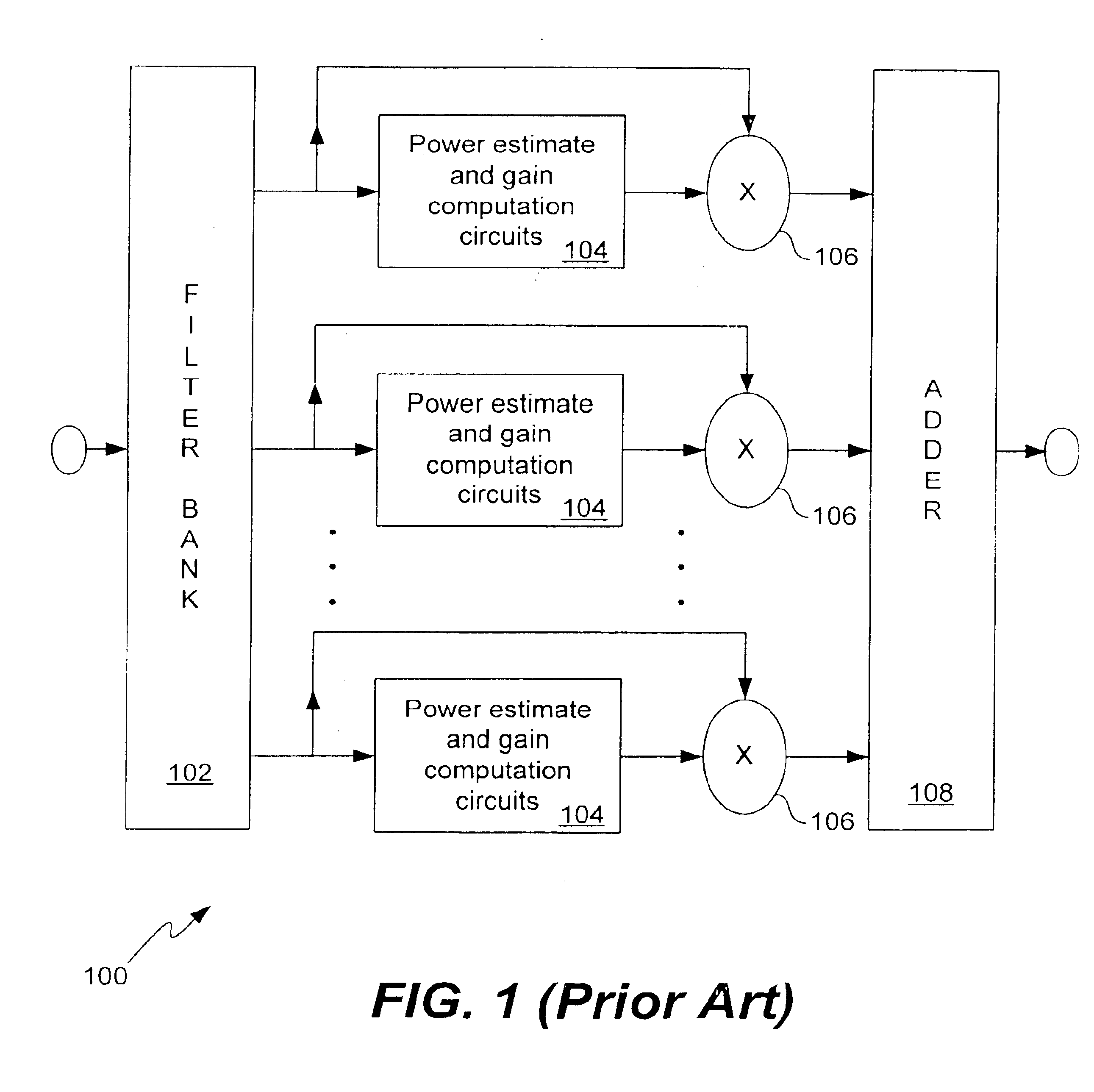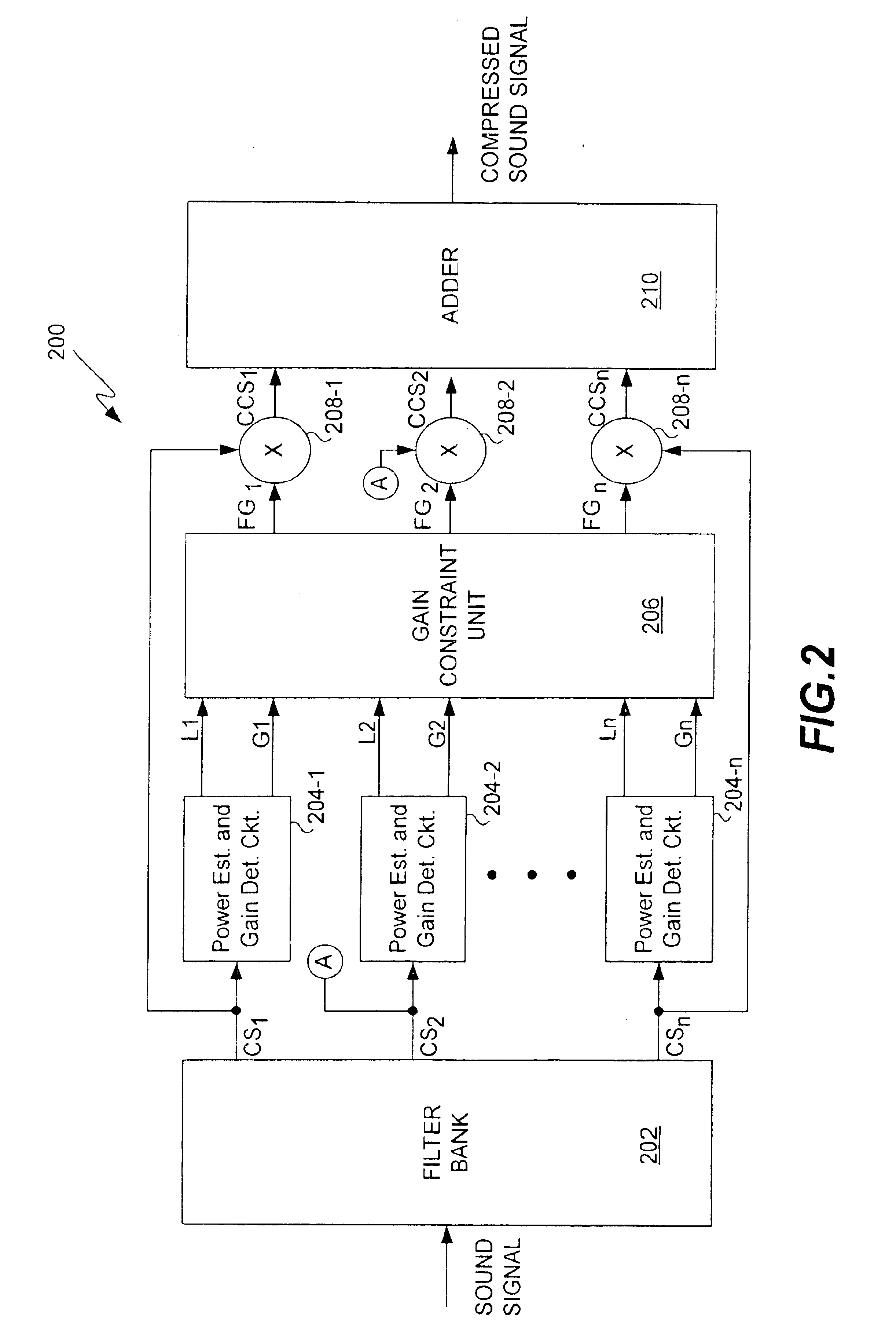Method and apparatus for filtering and compressing sound signals
a filtering and compression technology, applied in the field of sound signal processing, can solve the problems of extremely nonlinear or compressive sound processing in the inner ear (cochlea), extremely sensitive sound-receiving mechanism, loss is frequency-dependent, etc., and achieve the effects of preserving spectrum contrast, and preserving speech clarity and intelligibility
- Summary
- Abstract
- Description
- Claims
- Application Information
AI Technical Summary
Benefits of technology
Problems solved by technology
Method used
Image
Examples
Embodiment Construction
The invention relates to improved approaches to filter and compress sound signals so as to achieve not only speech audibility and intelligibility at low levels but also preserves spectrum contrast at high levels. According to one aspect of the invention, gain amounts for different frequency bands are individually constrained based on signal levels for the frequency bands. When signal level is low, the gain amount is not constrained to provide optimal audibility. Alternatively, when signal level is high, the gain is constrained to preserve spectrum contrast. Thus, the most critical information for speech intelligibility, speech clarity, and speech quality can be made available to hearing impaired people over wide range of signal level. The invention is particularly useful for hearing aids or other sound systems for the hearing impaired.
Embodiments of the invention are discussed below with reference to FIGS. 2-11. However, those skilled in the art will readily appreciate that the deta...
PUM
 Login to View More
Login to View More Abstract
Description
Claims
Application Information
 Login to View More
Login to View More - R&D
- Intellectual Property
- Life Sciences
- Materials
- Tech Scout
- Unparalleled Data Quality
- Higher Quality Content
- 60% Fewer Hallucinations
Browse by: Latest US Patents, China's latest patents, Technical Efficacy Thesaurus, Application Domain, Technology Topic, Popular Technical Reports.
© 2025 PatSnap. All rights reserved.Legal|Privacy policy|Modern Slavery Act Transparency Statement|Sitemap|About US| Contact US: help@patsnap.com



